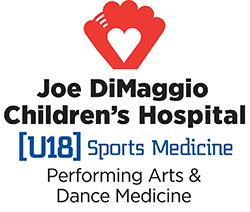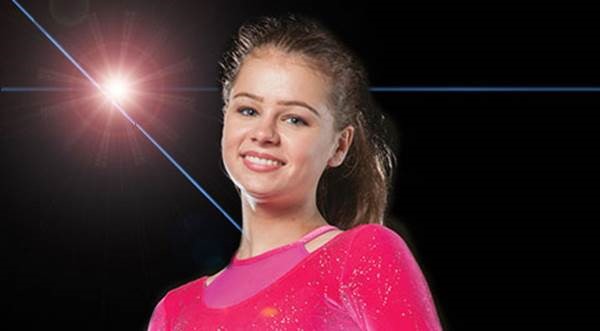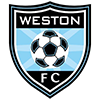Performing Arts & Dance Medicine

Dance is a complex physical commitment that requires holistic treatment of the musculoskeletal system. Physicians from Joe DiMaggio Children’s Hospital Orthopedic Center specialize in caring for pediatric, adolescent and young adult dancers and performing artists. We apply a comprehensive evaluation from nutrition, bone health, and sports psychology in addition to management of acute injuries. Our Joe DiMaggio Children’s Hospital experts, specialize in the assessment and treatment of performance-related injuries. With experience caring for company dancers from the Boston Ballet and Boston Conservatory, we cater to the unique discipline of dance biomechanics, flexibility, strength deficits, injury prevention and pointe readiness. Young dancers can expect full evaluation, diagnostics and treatment of all injuries at Joe DiMaggio Children’s Hospitals Performing Arts and Dance Medicine program.
To request an appointment with a pediatric orthopedic, sports concussion specialists or sports medicine physician please click here or contact us at (954) 265-6300.
To request general information on our [U18] Sports Medicine program please email Gabe Casanova at [javascript protected email address]
To request general information on our [U18] Performing Arts and Dance Medicine program please email us at [javascript protected email address]
To request information on our Athletic Training services please email Gabe Casanova at [javascript protected email address]
For information on the JDCH Concussion Clinic please click www.JDCH.com/Concussion
For information on our sports therapy programs in Coral Springs, Miramar and Wellington please click
Common Injuries in Dancers
Head
Concussions:
Though not as common, dancers can suffer from concussions. Concussion, a mild traumatic brain injury happens when a forceful blow to the head or body cases the brain to bounce against the skull. Symptoms include headaches, loss of consciousness, nausea, vomiting, balance issues, dizziness memory problems. Not all dancers will experience symptoms right away. If you suspect you may have a concussion, stop physical activities immediately and consult your healthcare provider. Most people with a concussion recover within 7-10 days with the proper care.
Back: Spondylolysis
Spondylolysis is a stress fracture of vertebra that may progress into spondylolisthesis, a condition of displacement of vertebrae from the spinal column. Spondylolysis is the cause for frequent low back pain in children. It is more common among children and teenagers who participate actively in sports such as football, weightlifting and dance.
Causes
Spondylolysis occurs as a result of a defect or stress fracture in the pars interarticularis, the part of the lumbar spine joining the upper and lower joints. Genetic factors may have a role. Children born with thin vertebra are prone to vertebral stress fractures. Also, repetitive trauma to the lower back area that occurs during sports and other activities can cause weakness of the pars interarticularis, resulting in spondylolysis.
Symptoms
Although initially the patient may not have any symptoms, lower back pain is apparent during the teenage growth spurt period. The pain worsens with vigorous physical activities and exercises. At times, the pain may feel similar to a muscle strain.
Risk Factors
Risk factors for developing spondylolysis include:
- Family history of back problems
- Repetitive trauma to the lower back
- Increased lordosis (swayback)
- Incomplete development of spinal cord (spina bifida occulta)
- Participation in sports such as dance, football and weight lifting that require constant overstretching of spine
Complications
Untreated spondylolysis may lead to further complications including:
- Spondylolisthesis, a condition where one or more vertebrae slips out of place
- Limited mobility and inactivity
- Weight gain because of inactivity
- Loss of bone density
- Loss of muscle strength
- Loss of flexibility
- Permanent nerve damage
- Chronic back pain
- Numbness, tingling or weakness in the legs
- Nerve compression causing problems with bowel or bladder control
Diagnosis
Your surgeon diagnoses spondylolysis by asking several questions and performing several tests that includes:
- Family History
- Medical History
- Physical Examination
- X-ray
- CT scan or MRI scan
Treatment
Primary treatment for spondylolysis is always conservative. The goal of the conservative treatment is to reduce the pain, allow the fracture to heal and improve the function.
Conservative treatment
Conservative treatment options include:
- Rest: Adequate rest should be taken and strenuous exercises should be avoided until the symptoms subside
- Medications: Nonsteroidal anti-inflammatory drugs (NSAID’s) may be prescribed to reduce the pain and inflammation. If NSAID’s do not provide relief, epidural steroid injections may be administered to the spine to reduce pain, numbness and tingling in the legs
- Physical therapy: An exercise program helps to strengthen the abdominal and back muscles, improve flexibility and increase range of motion of the lower back
- Use of braces: In severe cases of spondylolysis, a brace or back support may be used to stabilize the lower back during fracture healing
Surgical treatment
Surgery is usually required if spondylolysis progressed into spondylolisthesis. The goal of the surgery is to remove any abnormal bone compressing a nerve and to stabilize the spine.
Decompressive Laminectomy & Spinal Fusion: In this procedure a portion of the bone or lamina imparting pressure on the nerves is removed. A surgical incision is made in the back, then part of the bone and thickened tissue pressing on the spinal nerves is removed. This allows more space for the nerves thus relieving pain and pressure. This procedure makes the spine unstable and therefore spinal fusion will be performed to stabilize the spine.
Spinal fusion is the procedure of joining two adjacent vertebrae. During the procedure a piece of bone, taken from elsewhere in the body or donated from a bone bank, is transplanted between the adjacent vertebrae. As healing occurs, the transplanted bone fuses with the spine. This stimulates growth of a solid mass of bone which helps to stabilize the spine. In some cases, metal implants such as rods, hooks, wires, plates or screws are used to hold the vertebra firm until the new bone grows between them.
Prevention
Although spondylolysis is not completely preventable, certain factors can reduce the risk of developing the condition:
- Maintaining a healthy weight to reduce stress on the lower back
- Core exercises to keep the abdominal and back muscles strong will help to support the lower back
- Eating a well-balanced diet to keep your bones strong
Dance and Performing Arts Medicine at U18 Sports Medicine at Joe DiMaggio Children’s Hospital
Performing Arts and Dance Medicine Helps Dancers Back On Their Feet
Figure Skater Finds Relief with Sports Medicine Program
March 31, 2016

Emma, 16, wants to reach the highest level of figure skating, and she dreams of coaching the sport in the future. The hours on the ice, however, come with sacrifice. She developed back problems, specifically intense tailbone pain.
“She could not stand the constant pain, which would worsen on the rink,” says Nicole, Emma’s mother.
Emma was referred to U18, Joe DiMaggio Children’s Hospital’s sports medicine program.
"We have therapists who are specifically trained to treat those who participate in dance and the performing arts," said Matthew Fazekas, MD, pediatric sports medicine specialist at U18.
The experts at U18 discovered that Emma had developed an injury caused by the high-impact movements that she repeated on the ice, including jumps and landings. Emma received the full spectrum of care from U18, including exercises to strengthen her lower back and advanced therapy methods.
"I am very happy with the help and support I received at U18,” Emma said. “Today I feel better, stronger than ever."




 Menu
Menu




 Hollywood Office
Hollywood Office

![[U18] Sports Medicine](https://www.kidbones.net/wp-content/themes/ypo-theme/images/u18-sports-medicine-performing-arts-logo.png)












